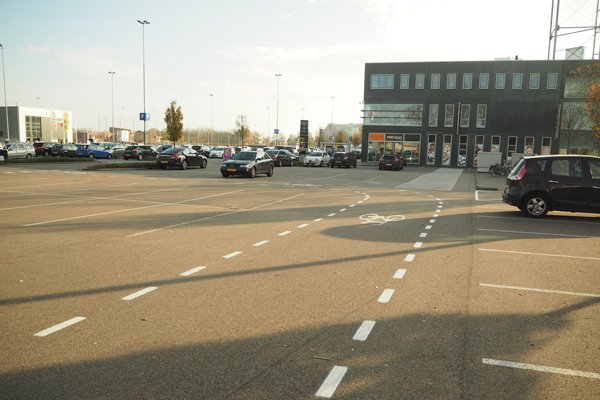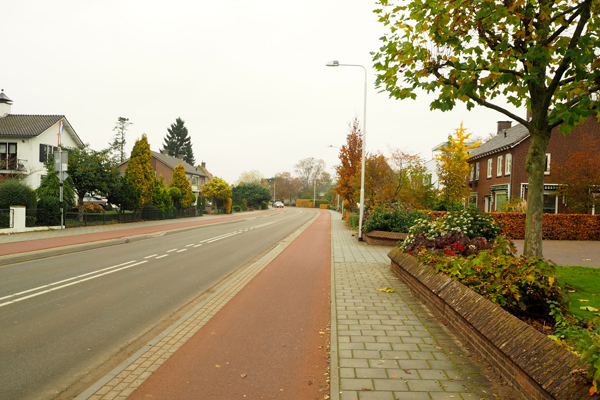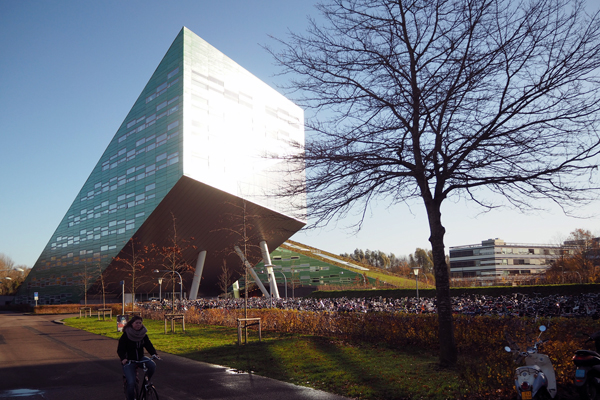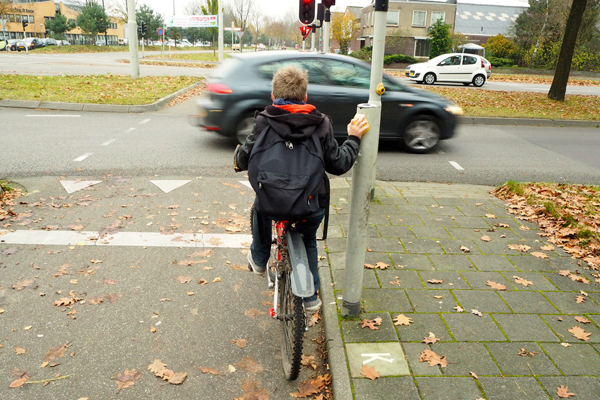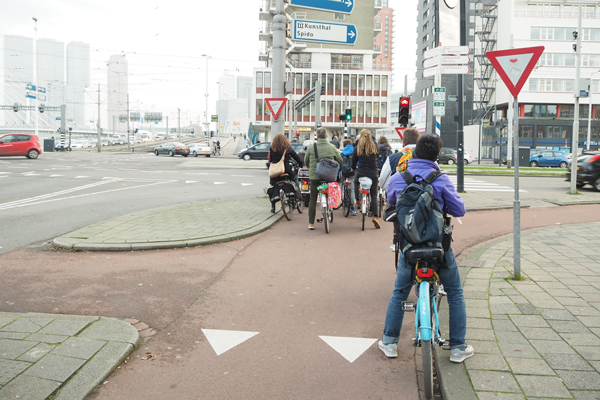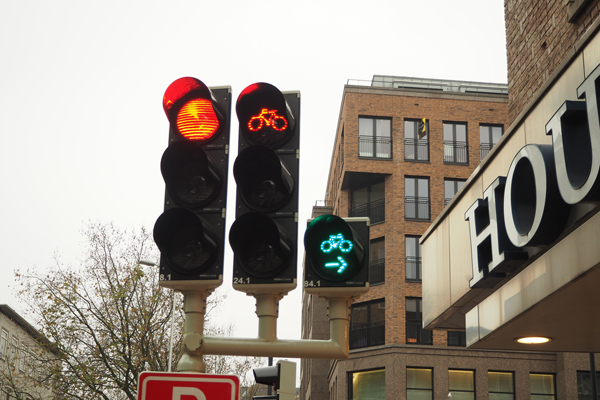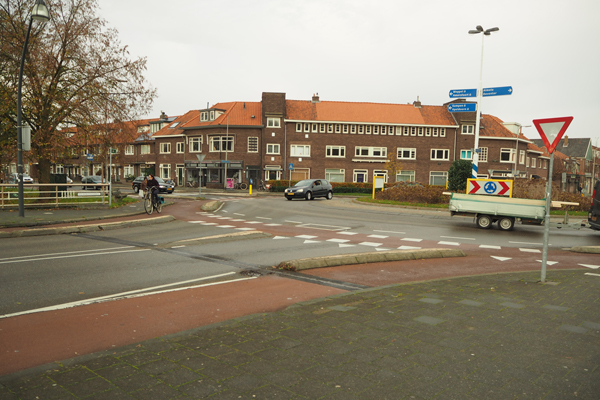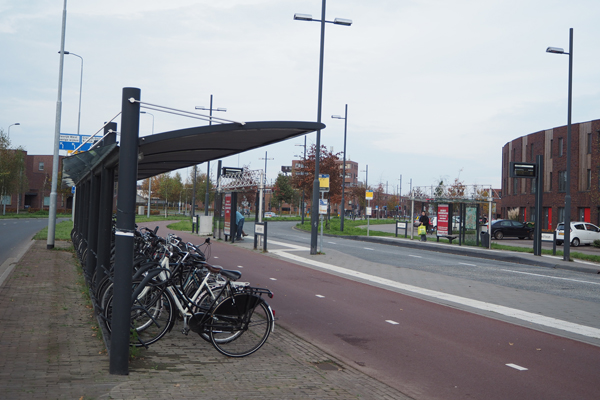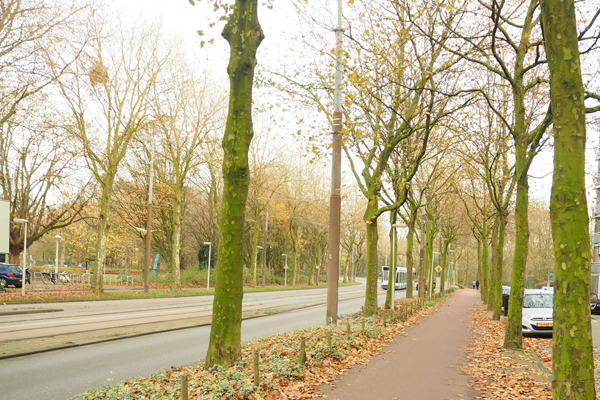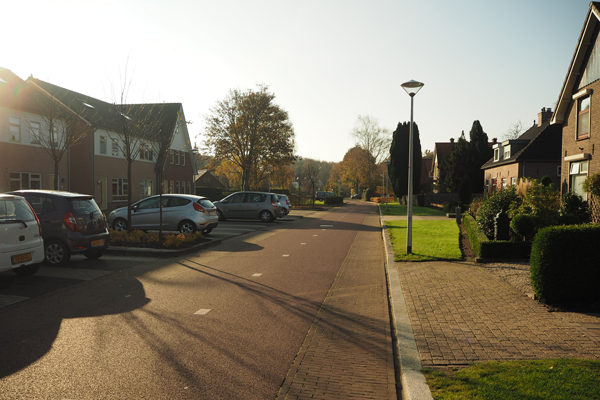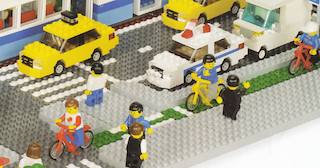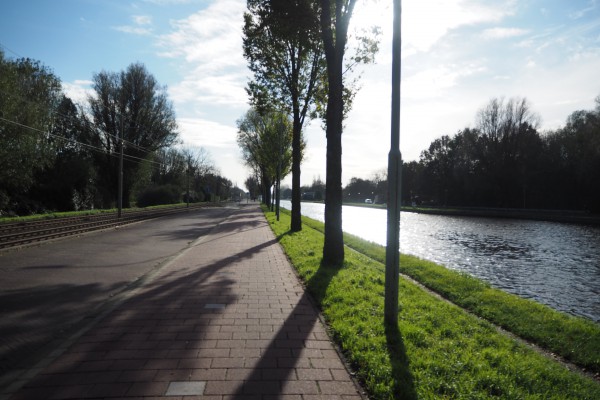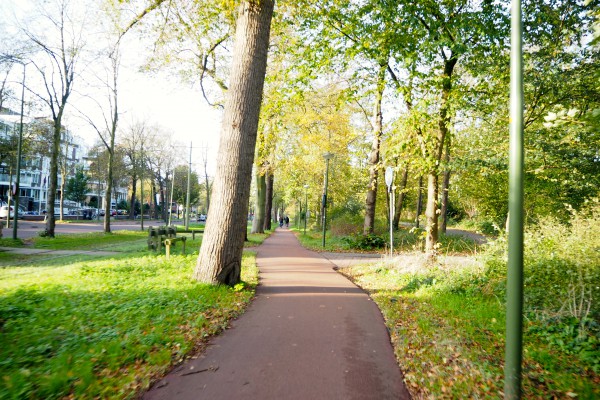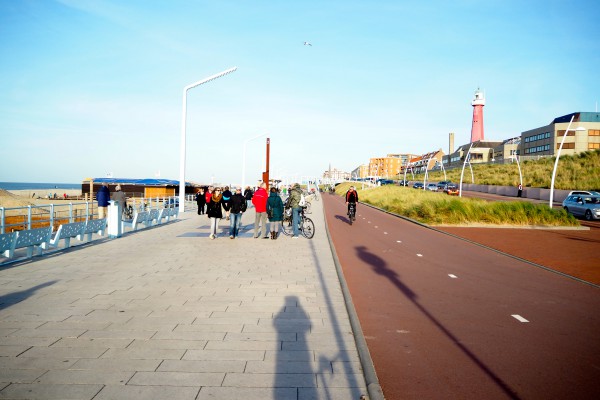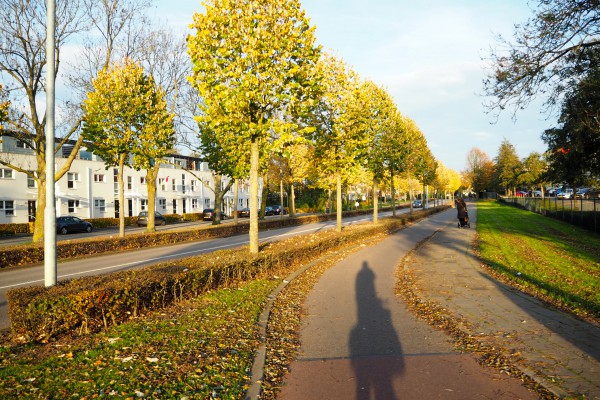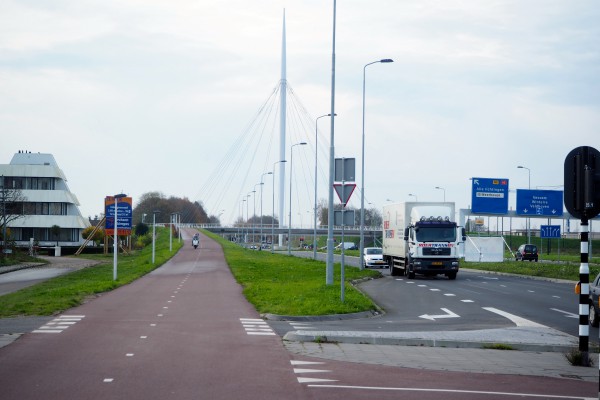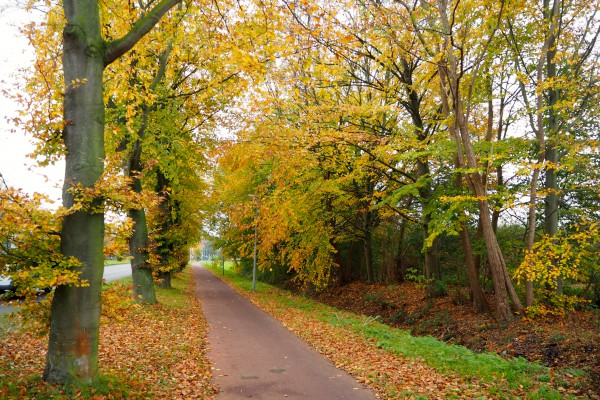Tagged: The Netherlands
Bike Infrastructure in Suburbs
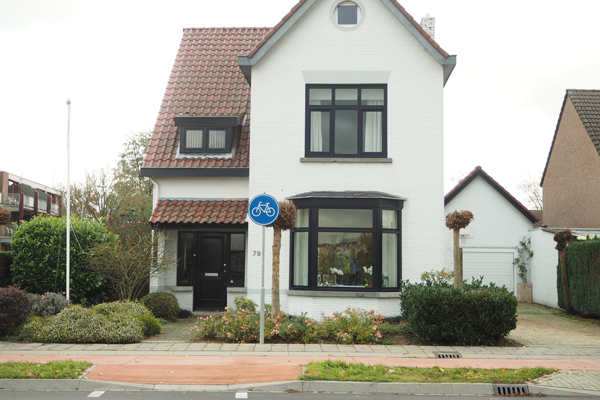
Imagine a fietspad right outside of your house. I would jump on my bike every time I look out the window.
When cycling between Dutch cities, I noticed bike infrastructure is as proliferative in suburban areas as in more central and denser areas. It’s a continued and comprehensive network of cycle tracks that would take you from your home to the city center, a few miles away. Like suburbs in America, a Dutch suburb does have big retail boxes, plazas, and big parking lots.
I have always thought that cycle tracks implementation in urban areas should be priority number one but I don’t think that’s necessary the case anymore. It’s the suburbs that actually need cycle tracks as much or more than in the city. Urban cities in the States already have walkable neighborhoods and decent public transits, where suburbs don’t and their public transit is insufficient.
In the States, suburban cities dominate the landscape and once couples have kids, it is almost always the case they move to suburbs for larger homes with yards, better schools and more personal safety. And that’s where suburbs stop. Streets are actually more dangerous for kids because of cars and wider streets with higher speed limits to facilitate driving even more. Many suburbs have urbanised and become congested with cars. If you’ve driven through San Mateo in Northern California or San Gabriel of Southern California, you know what I am talking about. The effect of children getting driven everywhere, relying on their parents, and lock inside at home must not be good for their welfare. These problems can be reversed simply by having bike infrastructure.
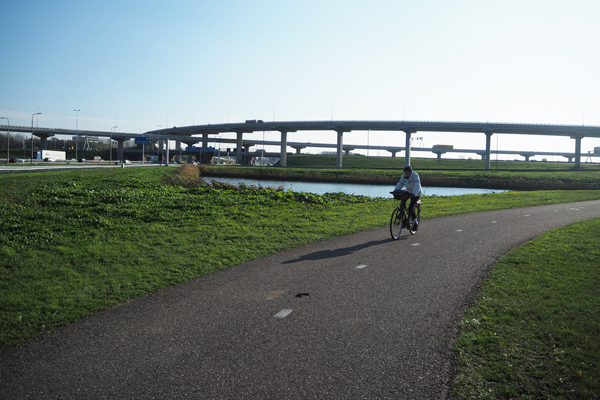
Doesn’t this look similar to freeways in America? Yes, a bike in a Dutch suburb can get you anywhere like a car.
It’s actually easier to build bike infrastructure in suburban than in urban cities. The real estate is cheaper and there’s a lot of space. We have seen some American suburban cities have started to follow suit. Some California suburban cities like Davis, Palo Alto, and Berkeley (all college towns) have done quite a bit but don’t go far enough to provide complete street safety for all ages. We see ‘bicycle blvds.’ on side streets but lack traffic calming features. On major streets, the famous ‘bike lanes’ to the left of parked cars is not going to reduce collisions with cyclists. There are ‘greenways’ where bike paths are away from streets but they are short and don’t go everywhere. Off-street bike paths are very popular in residential areas of the Netherlands.
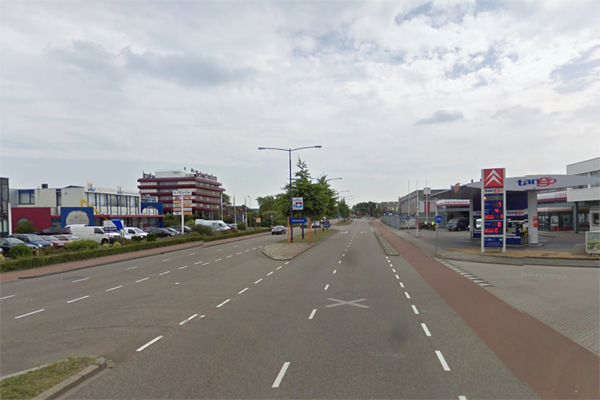
This street looks like any busy boulevard in American suburbs, but with cycle tracks and less car traffic.
Suburbs will only get more congested and road space for cars is going to get harder to remove, so city officials need to get very serious sooner than later.
7 bike facilities Americans can learn from the Dutch
There are many things Americans can learn from Dutch bicycle infrastructure. The infrastructure (in addition to their road safety laws) is so unbelievable well done that the bike modal share is around 30% in the entire country (50-60% in some cities), the traffic fatality rate for all road users is 3X lower than in America, and up to 9X more safe for cyclists per km riding in spite of having kids and adults well into their 80s riding bikes. And the transportation engineers/urban planners don’t stop there; they are constantly improving on it at a rapid rate.
I see grade school kids biking alone to schools, taking field trips in groups, and I even see them taking their bikes onto trains (intercity routes, not within cities). You don’t just see young to middle-aged adults riding but every demographic with relative equal number of males to females including disabled people on their electric-assist wheelchairs on bike paths. Pretty much, how you would see in any population in the world. Everybody!
So, here are a list of seven bike facilities that Americans can copy from the world’s best infrastructure without removing road space for cars. Like I said, there are so much but I am listing the seven obvious ones.
1. Protected Intersections
When I was touring through 15 or so cities, not every road has bike path that is protected from automobiles. The ones that are not segregated are similar to white painted lanes that you see everywhere in America. However, the Dutch know it is absolutely necessary to have protected intersections even though roads have painted lanes. Because more than half of all bike collisions with cars occur at intersections, it is more important to have protected intersections than protected bike paths where space is limited. The protected intersections are clearly marked with red asphalted cross-bikes; shark teethed yield signs for drivers when approaching to make turns; cars are set further behind cyclists when both are waiting; and curb islands at corners to make drivers turn slower and to have a better view ahead. A nice explanation is found here.
2. Bike Traffic Lights
Another way to reduce crashes at crossroads (ones without roundabouts) with cars is to have traffic lights separately for cyclists. In Zwolle, the cycling city of 2014, many of its unprotected intersections have bike traffic lights. Bike traffic lights have sensors too but work in congruence with traffic lights for automobiles. In Groningen, the cycling city of 2002, green bike traffic lights on some busy streets allow all cyclists from every direction to cross. What these bike traffic lights do is that only cyclists are crossing through which makes it safe. Also, these all work because cars are not allowed to make right turns on red which makes bike traffic lights work really well in both unprotected and protected intersections.
3. Roundabouts
Roundabouts in the Netherlands are extremely common as elsewhere in other European countries. Stop signs are uncommon. Stop signs are inefficient and unsafe for both drivers and especially for bicyclists. Roundabouts get more cars moving than Stop signs and reduce wear and tear, and emission. And cyclists won’t need to stop due to momentum. This is actually more predictable for all road users and predictability makes roads safer. Not all drivers stop at Stop signs, and only some bicyclists are willing to stop, so this makes streets unsafe for all road users because of the unpredictability. Secondly, cars are coming from every direction which is also dangerous. At the junctions of roundabouts, roads are narrowed with enough space for cars going into and leaving from one spot where they are crossing. The narrow road brings autos down to a slower speed and if that’s not enough, speed bumps are placed just before the roundabouts to further impede speed.
4. Bike racks at Bus Stops
In cities like Oakland and San Francisco, it is just common sense to have bike parking at transit stations but bike racks at bus stops? Not so much. Multi-modal transport is key to any city’s transportation sustainability, and biking is a huge part of it. Providing bike racks at bus stops is just as important as having bike racks at train stations. BART and Caltrain, both rail transits for the Bay Area, certainly don’t go everywhere so buses are there to compensate. Particularly in the suburban regions, buses are the only public transport so installing bike racks next to bus stops will enhance multi-modal transportation.
5. Bike Ramps
At every bike parking station underground or above ground in the Netherlands, there are bike ramps (and some have bike escalators!) including elevators. Bike ramps are built at an incline that is easy to push up or down the stairs. There is only one bike ramp I found in all underground stations in the Bay Area and that is just pitiful on every level. We have bike parking but no bike ramps. Not all elevators are at every station and if there are, they are slow, cramped and reek of urine. Bikes are not allowed on escalators and how do transit officials expect women to carry their heavy bikes down and up the steep stairs.
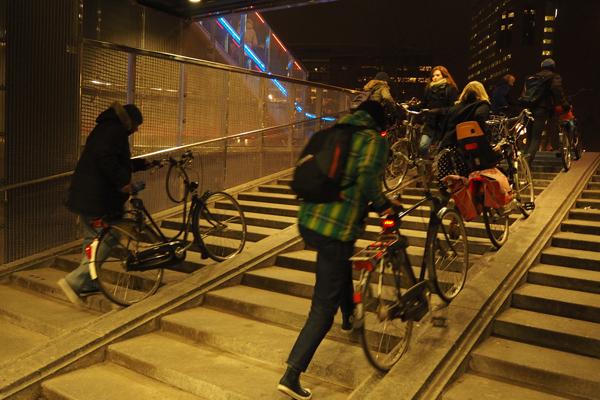
Bike ramps at a bike parking garage in Utrecht. Note the easiness of pushing bikes up and down the stairs.
6. Sidewalks Conversion into Bike Paths in Suburbs/Exurbs
Suburbia and exurbia run rampant in the States and you rarely see people walking on sidewalks. It’s mostly empty. If you think about it, who would walk for such a distance when cars are there in every household? As I was riding between towns and cities, what I noticed surprises me. There are no sidewalks and if there are which is far and few in between, are very narrow. What’s in place of sidewalks are cycle tracks. It’s a brilliant idea! The cycle tracks are actually foot paths as well. The Dutch know that in far flung neighborhoods where cars are the major transport, you are not going to see pedestrians walking much so they turn that space into both foot and cycle paths. We can do that here as well in the States and that won’t impede the all mighty cars’ space.
7. Fietstraat
In some parts of the Bay Area like Berkeley and Palo Alto, there are “bicycle boulevards” that bicycles and cars share residential streets equally and at a low speed. In the Netherlands, fietsstraat (translated as bicycle streets) are taken a step further by turning residential streets into streets for bicycles with cars as guests. And fietsstraat are built to be like cycle tracks with the usual red asphalt (see photo below). Having this type of road design tells who clearly has the priority more and will appeal to inexperienced and risk-averse riders. Because bicycle boulevards are meant to be shared equally between drivers and cyclists and that naturally always puts cyclists as guests, especially when they still look like streets for cars.
Transportation and city officials, if you want to make your city livable for all demographics and reduce traffic fatalities, these are some of the things you can implement without much opposition from drivers. You know bicycle infrastructure is so much cheaper and more beneficial than any type of infrastructure, so let’s get serious and start executing it.
Dutch cycle tracks to die for… Part 1
So far, I have visited as many as 7 cities in The Netherlands and as I biked through these charming towns, I notice the cycle tracks are beautifully landscaped. They are so attractive that they are almost eye candy to me. To be fair, I am not talking about bike paths that are in parks or tuck away somewhere that you have to look on a map to find it. I am talking about cycle tracks that everyday people on bikes use and riding adjacent to streets within city limits.
Note many cycle tracks are bidirectional, and many times are on both sides of the street. Moreover, many are really wide to accommodate conversational cycling. The ones that are installed in recent times are made of special red asphalt that is really smooth that any weekend road warrior would appreciate. And no flats to worry about!
By the way, did you know that the word “landscape” originates from the Dutch? I am sure because they have to work their land to manage floods since the beginning of time that they have become experts in landscaping and among other things. This expertise can be seen in their bike infrastructure.
As I am half way through my bike travel, I have more cities to discover and will post more eye candy photos of cycle tracks. So stay tuned.
